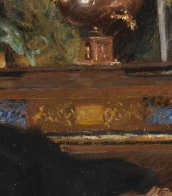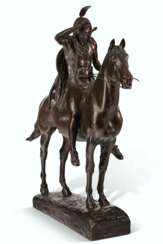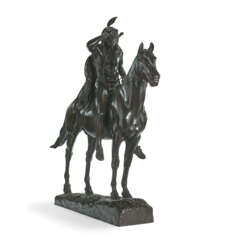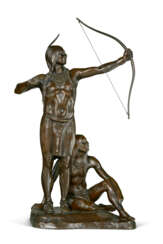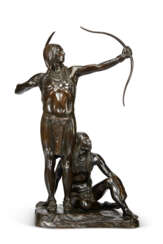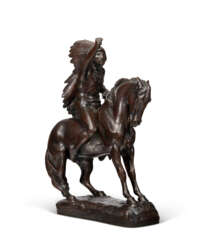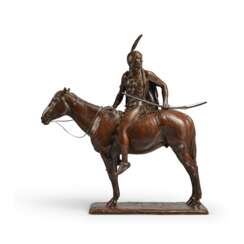сайрус эдвин даллин (1861 - 1944)
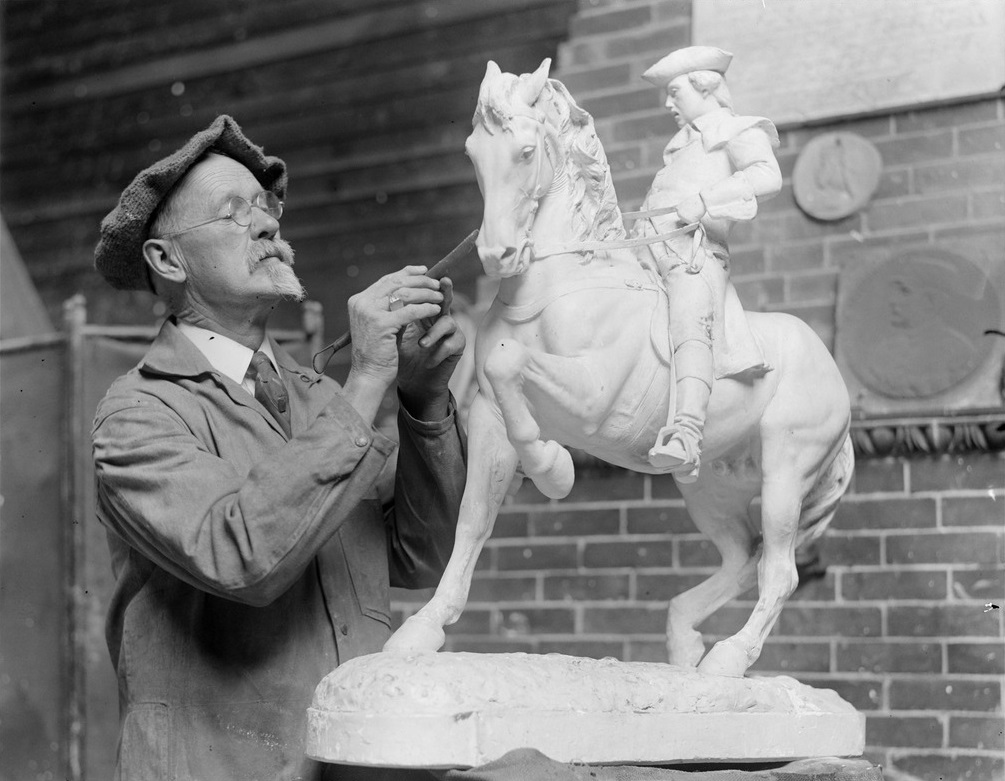
Cyrus Edwin Dallin was an American sculptor. He is known for his sculptures of Native American figures, as well as for his equestrian and civic monuments.
Dallin grew up in Utah and showed an early talent for sculpture. He studied art in Boston and later in Paris, where he became influenced by the naturalism of French sculptors like Auguste Rodin. Dallin returned to the United States in 1897 and began to create a series of sculptures depicting Native American figures.
In addition to his work as a sculptor, Dallin also taught art and was an active member of the art community in Boston. He designed several civic monuments, including the Paul Revere Monument in Boston's North End and the Soldiers' and Sailors' Monument in Springfield, Massachusetts.
Dallin was a member of the National Academy of Design, the American Academy of Arts and Letters, and the National Sculpture Society. His work is in the collections of many major museums, including the Metropolitan Museum of Art, the National Gallery of Art, and the Boston Museum of Fine Arts.
Today, Dallin is widely regarded as one of the most important sculptors of the late 19th and early 20th centuries, and his sculptures of Native American figures are recognized as powerful and sympathetic depictions of a culture that had long been misrepresented in American art.
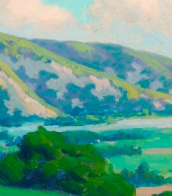

Cyrus Edwin Dallin was an American sculptor. He is known for his sculptures of Native American figures, as well as for his equestrian and civic monuments.
Dallin grew up in Utah and showed an early talent for sculpture. He studied art in Boston and later in Paris, where he became influenced by the naturalism of French sculptors like Auguste Rodin. Dallin returned to the United States in 1897 and began to create a series of sculptures depicting Native American figures.
In addition to his work as a sculptor, Dallin also taught art and was an active member of the art community in Boston. He designed several civic monuments, including the Paul Revere Monument in Boston's North End and the Soldiers' and Sailors' Monument in Springfield, Massachusetts.
Dallin was a member of the National Academy of Design, the American Academy of Arts and Letters, and the National Sculpture Society. His work is in the collections of many major museums, including the Metropolitan Museum of Art, the National Gallery of Art, and the Boston Museum of Fine Arts.
Today, Dallin is widely regarded as one of the most important sculptors of the late 19th and early 20th centuries, and his sculptures of Native American figures are recognized as powerful and sympathetic depictions of a culture that had long been misrepresented in American art.
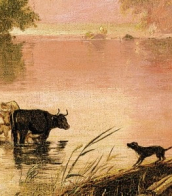

Cyrus Edwin Dallin was an American sculptor. He is known for his sculptures of Native American figures, as well as for his equestrian and civic monuments.
Dallin grew up in Utah and showed an early talent for sculpture. He studied art in Boston and later in Paris, where he became influenced by the naturalism of French sculptors like Auguste Rodin. Dallin returned to the United States in 1897 and began to create a series of sculptures depicting Native American figures.
In addition to his work as a sculptor, Dallin also taught art and was an active member of the art community in Boston. He designed several civic monuments, including the Paul Revere Monument in Boston's North End and the Soldiers' and Sailors' Monument in Springfield, Massachusetts.
Dallin was a member of the National Academy of Design, the American Academy of Arts and Letters, and the National Sculpture Society. His work is in the collections of many major museums, including the Metropolitan Museum of Art, the National Gallery of Art, and the Boston Museum of Fine Arts.
Today, Dallin is widely regarded as one of the most important sculptors of the late 19th and early 20th centuries, and his sculptures of Native American figures are recognized as powerful and sympathetic depictions of a culture that had long been misrepresented in American art.
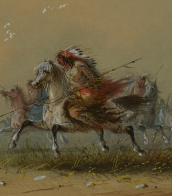

Cyrus Edwin Dallin was an American sculptor. He is known for his sculptures of Native American figures, as well as for his equestrian and civic monuments.
Dallin grew up in Utah and showed an early talent for sculpture. He studied art in Boston and later in Paris, where he became influenced by the naturalism of French sculptors like Auguste Rodin. Dallin returned to the United States in 1897 and began to create a series of sculptures depicting Native American figures.
In addition to his work as a sculptor, Dallin also taught art and was an active member of the art community in Boston. He designed several civic monuments, including the Paul Revere Monument in Boston's North End and the Soldiers' and Sailors' Monument in Springfield, Massachusetts.
Dallin was a member of the National Academy of Design, the American Academy of Arts and Letters, and the National Sculpture Society. His work is in the collections of many major museums, including the Metropolitan Museum of Art, the National Gallery of Art, and the Boston Museum of Fine Arts.
Today, Dallin is widely regarded as one of the most important sculptors of the late 19th and early 20th centuries, and his sculptures of Native American figures are recognized as powerful and sympathetic depictions of a culture that had long been misrepresented in American art.
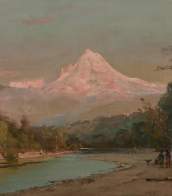

Cyrus Edwin Dallin was an American sculptor. He is known for his sculptures of Native American figures, as well as for his equestrian and civic monuments.
Dallin grew up in Utah and showed an early talent for sculpture. He studied art in Boston and later in Paris, where he became influenced by the naturalism of French sculptors like Auguste Rodin. Dallin returned to the United States in 1897 and began to create a series of sculptures depicting Native American figures.
In addition to his work as a sculptor, Dallin also taught art and was an active member of the art community in Boston. He designed several civic monuments, including the Paul Revere Monument in Boston's North End and the Soldiers' and Sailors' Monument in Springfield, Massachusetts.
Dallin was a member of the National Academy of Design, the American Academy of Arts and Letters, and the National Sculpture Society. His work is in the collections of many major museums, including the Metropolitan Museum of Art, the National Gallery of Art, and the Boston Museum of Fine Arts.
Today, Dallin is widely regarded as one of the most important sculptors of the late 19th and early 20th centuries, and his sculptures of Native American figures are recognized as powerful and sympathetic depictions of a culture that had long been misrepresented in American art.
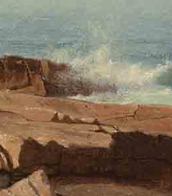

Cyrus Edwin Dallin was an American sculptor. He is known for his sculptures of Native American figures, as well as for his equestrian and civic monuments.
Dallin grew up in Utah and showed an early talent for sculpture. He studied art in Boston and later in Paris, where he became influenced by the naturalism of French sculptors like Auguste Rodin. Dallin returned to the United States in 1897 and began to create a series of sculptures depicting Native American figures.
In addition to his work as a sculptor, Dallin also taught art and was an active member of the art community in Boston. He designed several civic monuments, including the Paul Revere Monument in Boston's North End and the Soldiers' and Sailors' Monument in Springfield, Massachusetts.
Dallin was a member of the National Academy of Design, the American Academy of Arts and Letters, and the National Sculpture Society. His work is in the collections of many major museums, including the Metropolitan Museum of Art, the National Gallery of Art, and the Boston Museum of Fine Arts.
Today, Dallin is widely regarded as one of the most important sculptors of the late 19th and early 20th centuries, and his sculptures of Native American figures are recognized as powerful and sympathetic depictions of a culture that had long been misrepresented in American art.


Cyrus Edwin Dallin was an American sculptor. He is known for his sculptures of Native American figures, as well as for his equestrian and civic monuments.
Dallin grew up in Utah and showed an early talent for sculpture. He studied art in Boston and later in Paris, where he became influenced by the naturalism of French sculptors like Auguste Rodin. Dallin returned to the United States in 1897 and began to create a series of sculptures depicting Native American figures.
In addition to his work as a sculptor, Dallin also taught art and was an active member of the art community in Boston. He designed several civic monuments, including the Paul Revere Monument in Boston's North End and the Soldiers' and Sailors' Monument in Springfield, Massachusetts.
Dallin was a member of the National Academy of Design, the American Academy of Arts and Letters, and the National Sculpture Society. His work is in the collections of many major museums, including the Metropolitan Museum of Art, the National Gallery of Art, and the Boston Museum of Fine Arts.
Today, Dallin is widely regarded as one of the most important sculptors of the late 19th and early 20th centuries, and his sculptures of Native American figures are recognized as powerful and sympathetic depictions of a culture that had long been misrepresented in American art.
